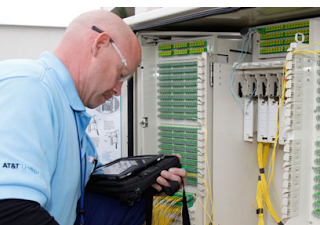On December 23, 2016, Nokia carried out the world's first connection based on the 5GTF 'pre-standard'.
The test, which took place in a laboratory environment in Oulu, Finland, used the 5GTF (Verizon 5G Technology Forum) draft specification and was made possible by Nokia's commercially available 5G-ready AirScale radio access with the Nokia AirFrame data center platform running on Intel architecture, together with the Intel 5G mobile trial platform as an end-user device.
The lab set-up included:
Harold Graham, head of the 5G Business Line in Mobile Networks at Nokia, said: "This first 5G connection is a true landmark for the telecommunications industry, and yet another mark of Nokia's capabilities in 5G. With its low latency and significant capacity and speed increases, 5G will deliver a variety of new and innovative applications, and Nokia is playing leading roles in all aspects of the total 5G proposition. This 'first' highlights our commitment to being on the front line in providing our customers 5G-ready technologies so that they can seize early market opportunities by building 5G-enabled applications."
Nokia noted that the first GSM call was made in Finland more than 20 years ago using a network built by Nokia. The world's first 3G voice call, on a commercial 3GPP system was conducted in Finland in 2001, and then with the world's first LTE call via commercial software in Germany in 2009.
http://www.nokia.com
The test, which took place in a laboratory environment in Oulu, Finland, used the 5GTF (Verizon 5G Technology Forum) draft specification and was made possible by Nokia's commercially available 5G-ready AirScale radio access with the Nokia AirFrame data center platform running on Intel architecture, together with the Intel 5G mobile trial platform as an end-user device.
The lab set-up included:
- Nokia AirScale radio access, BTS with system module and radio unit running early 5G software, with 100 MHz frequency band on 28 GHz
- Nokia AirFrame data center solution
- Intel 5G mobile trial platform designed to support sub-6GHz and mmWave 5G bands; 2 or 4 layer MIMO; up to 800MHz channel bandwidth; and designed to support all pre-standard specifications trending to a common 3GPP NR standard V.
- ideo streaming over the air to the device
Harold Graham, head of the 5G Business Line in Mobile Networks at Nokia, said: "This first 5G connection is a true landmark for the telecommunications industry, and yet another mark of Nokia's capabilities in 5G. With its low latency and significant capacity and speed increases, 5G will deliver a variety of new and innovative applications, and Nokia is playing leading roles in all aspects of the total 5G proposition. This 'first' highlights our commitment to being on the front line in providing our customers 5G-ready technologies so that they can seize early market opportunities by building 5G-enabled applications."
Nokia noted that the first GSM call was made in Finland more than 20 years ago using a network built by Nokia. The world's first 3G voice call, on a commercial 3GPP system was conducted in Finland in 2001, and then with the world's first LTE call via commercial software in Germany in 2009.
http://www.nokia.com

















